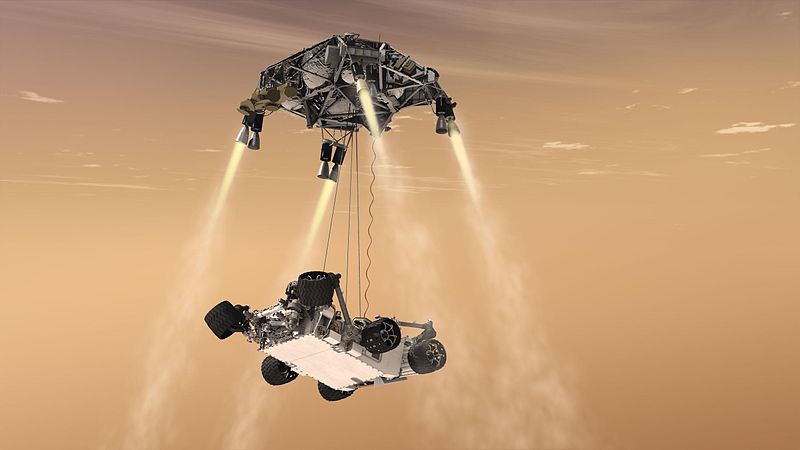Файл:593484main pia14839 full Curiosity's Sky Crane Maneuver, Artist's Concept.jpg
Перейти до навігації
Перейти до пошуку

Розмір при попередньому перегляді: 800 × 450 пікселів. Інші роздільності: 320 × 180 пікселів | 640 × 360 пікселів | 1024 × 576 пікселів | 1280 × 720 пікселів | 2500 × 1406 пікселів.
Повна роздільність (2500 × 1406 пікселів, розмір файлу: 161 КБ, MIME-тип: image/jpeg)
Історія файлу
Клацніть на дату/час, щоб переглянути, як тоді виглядав файл.
| Дата/час | Мініатюра | Розмір об'єкта | Користувач | Коментар | |
|---|---|---|---|---|---|
| поточний | 21:12, 4 листопада 2011 |  | 2500 × 1406 (161 КБ) | Pline |
Використання файлу
Така сторінка використовує цей файл:
Глобальне використання файлу
Цей файл використовують такі інші вікі:
- Використання в af.wikipedia.org
- Використання в ar.wikipedia.org
- Використання в ckb.wikipedia.org
- Використання в cs.wikipedia.org
- Використання в en.wikipedia.org
- Використання в eo.wikipedia.org
- Використання в es.wikinews.org
- Використання в fi.wikipedia.org
- Використання в fr.wikipedia.org
- Використання в ja.wikipedia.org
- Використання в ml.wikipedia.org
- Використання в no.wikipedia.org
- Використання в pl.wikipedia.org
- Використання в ro.wikipedia.org
- Використання в ru.wikipedia.org
- Використання в sh.wikipedia.org
- Використання в sk.wikipedia.org
- Використання в sr.wikipedia.org
- Використання в sr.wikinews.org
- Використання в ta.wikinews.org
- Використання в zh.wikipedia.org

